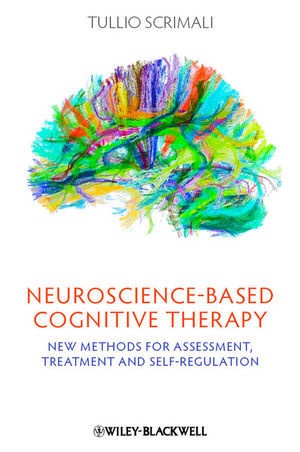Read more
Informationen zum Autor Professor Tullio Scrimali is a pioneer of clinical psychophysiology and cognitive therapy, recognized for his contribution to the discipline worldwide. He was a founding fellow of the Academy of Cognitive Therapy (ACT), and obtained the first Chair of Cognitive Therapyat the University of Catania, Sicily, where he currently directs the European School of Cognitive Therapy (ALETEIA International). Klappentext A pioneer of CBT explores recent advances in neuroscience, showing how they can be applied in practice to improve the effectiveness of cognitive therapy for clients with a wide range of diagnoses including mood disorders, anxiety disorders, eating disorders and schizophrenia* Utilizes the latest advances in neuroscience to introduce tools that allow clinicians, for the first time, to directly 'measure' the effectiveness of cognitive therapy interventions* Rigorously based in neuroscientific research, yet designed to be readable and jargon-free for a professional market of CBT practitioners* Covers theory, assessment, and the treatment of a wide range of specific disorders including anxiety disorders, mood disorders, eating disorders, addictions and schizophrenia* Written by a respected pioneer in the field Zusammenfassung Introducing new strategies for measuring the effectiveness of cognitive therapy, Neuroscience-based Cognitive Therapy helps clinicians assess the emerging psychotherapeutic force that is neuroscience. Inhaltsverzeichnis Foreword by Arthur Freeman xiii Preface xix Acknowledgments xxi List of Abbreviations xxiii Introduction 1 Part I Neuroscience in Context 1 Neuroscience, Clinical Psychology, and Cognitive Therapy 5 2 The Mind-Brain Problem 11 3 Motor Theories of Mind and a Complex Biocybernetic Model in Neuroscience 20 4 Complexity, Chaos, and Dynamical Systems 27 4.1 Introduction 27 4.2 Complexity 27 4.3 Chaos Theory 29 4.4 Complex Systems 30 4.5 From Complexity to a Neuroscience-based Cognitive Therapy 32 5 Modular and Gradiental Brain, Coalitional Mind 35 5.1 Introduction 35 5.2 The Modular and Gradiental Brain 37 5.3 The Social Brain 41 5.4 The Central Nervous System, Neurovegetative Nervous System, and Visceral Brain 44 5.4.1 The Neurovegetative Nervous System 44 5.4.2 The Visceral Brain 46 5.5 Paleognosis and Neognosis in theMind of Homo sapiens 47 5.6 Memory 48 5.7 Internal Representational Systems 51 5.7.1 Imagery 52 5.7.2 Internal Dialog 54 5.8 Knowledge Processes 54 5.8.1 Introduction 54 5.8.2 The Unconscious and Tacit Dimension 55 5.8.3 Information Coding in the Human Brain 57 5.8.4 Tacit Knowledge: Experiencing 59 5.8.5 Explicit Knowledge: Explaining 59 5.8.6 Procedural Knowledge: Acting 60 5.8.7 Social or Machiavellian Intelligence: Relating 61 5.9 Coalitional Processes 62 5.9.1 The Self 62 5.9.2 Personal Identity 66 5.9.3 Narrative 67 6 Phylogenesis of the Brain and Ontogenesis of the Mind: Biological and Cultural Evolutionism 70 6.1 The Reptilian Brain: The Archipallium 76 6.2 The Limbic System: The Paleopallium 76 6.3 Brain Structures of Less Evolved Mammals: The Neopallium 77 6.4 Specialized Frontal Lobes 77 Part II Clinical Psychophysiology and its Parameters 7 Psychophysiology and Clinical Psychophysiology 83 8 Electroencephalography and Quantitative Electroencephalography 86 8.1 Electroencephalography 86 8.1.1 Frequency 87 8.1.2 Amplitude 88 8.1.3 Morphology 89 8.1.4 Symmetry 89 8.1.5 Coherence 89 8.1.6 Artifacts 90 8.2 Quantitative Electroencephalography 9...

